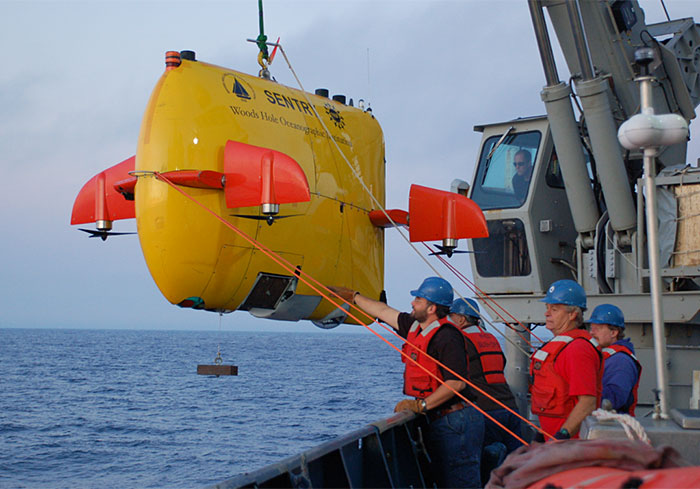Navigation, localization, and state estimation in complex environments
Autonomous and semi-autonomous robotic vehicles operating with minimal human supervision are presently used in commercial offshore operations that, for safety reasons, typically conduct surveys far from valuable and sensitive infrastructure. ROV operations, on the other hand, routinely occur near complex infrastructure, but only under careful supervision by skilled human pilots.
WHOI scientists are pursuing a collaborative research program with colleagues at the Massachusetts Institute of Technology (MIT) to demonstrate the ability of AUVs to localize and navigate in an environment that includes complex manmade structures. The program will combine WHOI’s experience in navigation and control of AUVs in rugged natural terrain with MIT’s experience in computational methods for mobile robot localization and navigation in manmade environments. Research will begin with basic work in a test tank fitted with appropriate structures and obstacles, then progress to testing around the WHOI dock and finally to an actual offshore structure.
Principal Engineers
James Kinsey
Assistant Scientist, WHOI
Dana Yoerger
Senior Scientist, WHOI
John Leonard
Professor of Mechanical and Ocean Engineering, MIT

